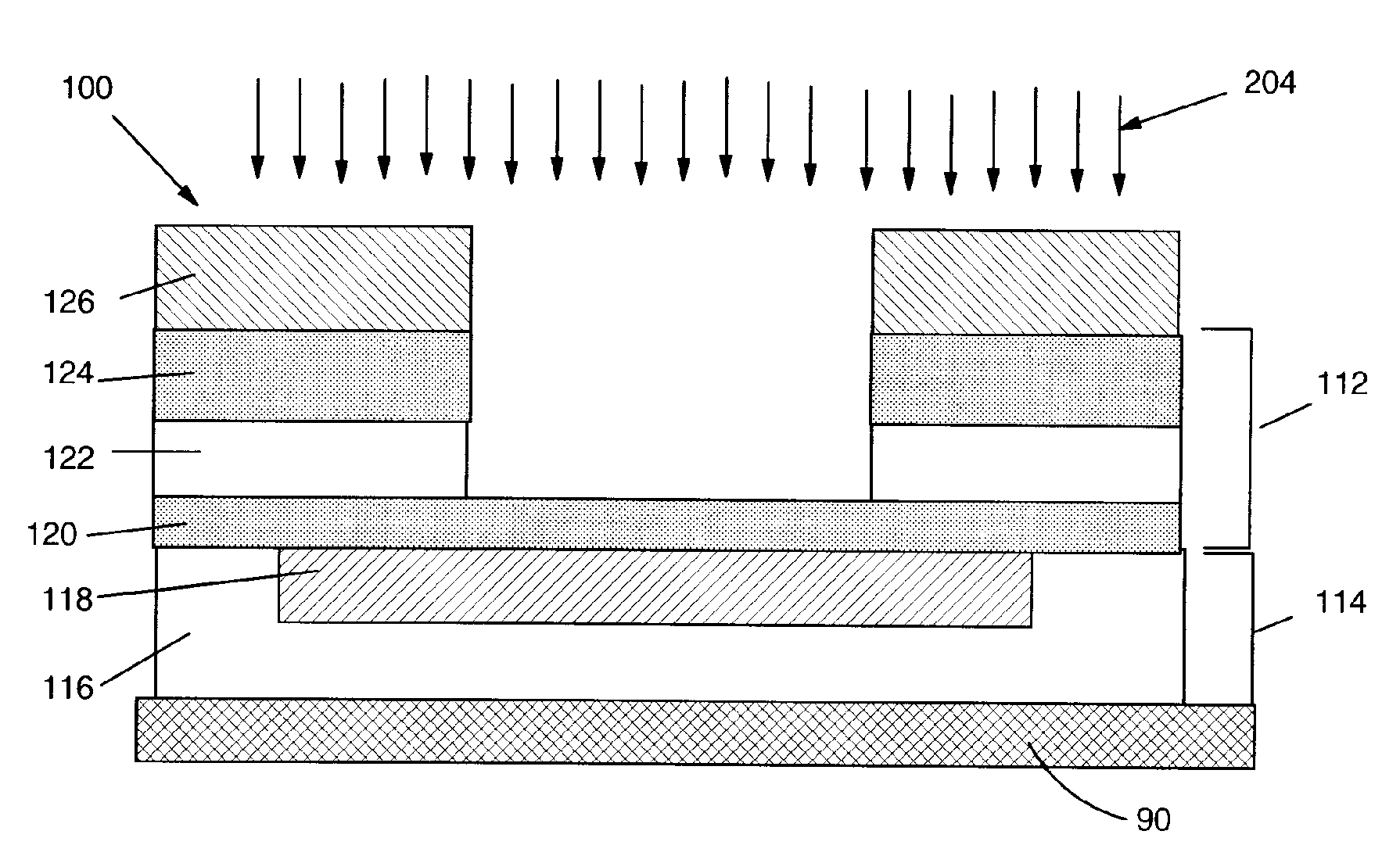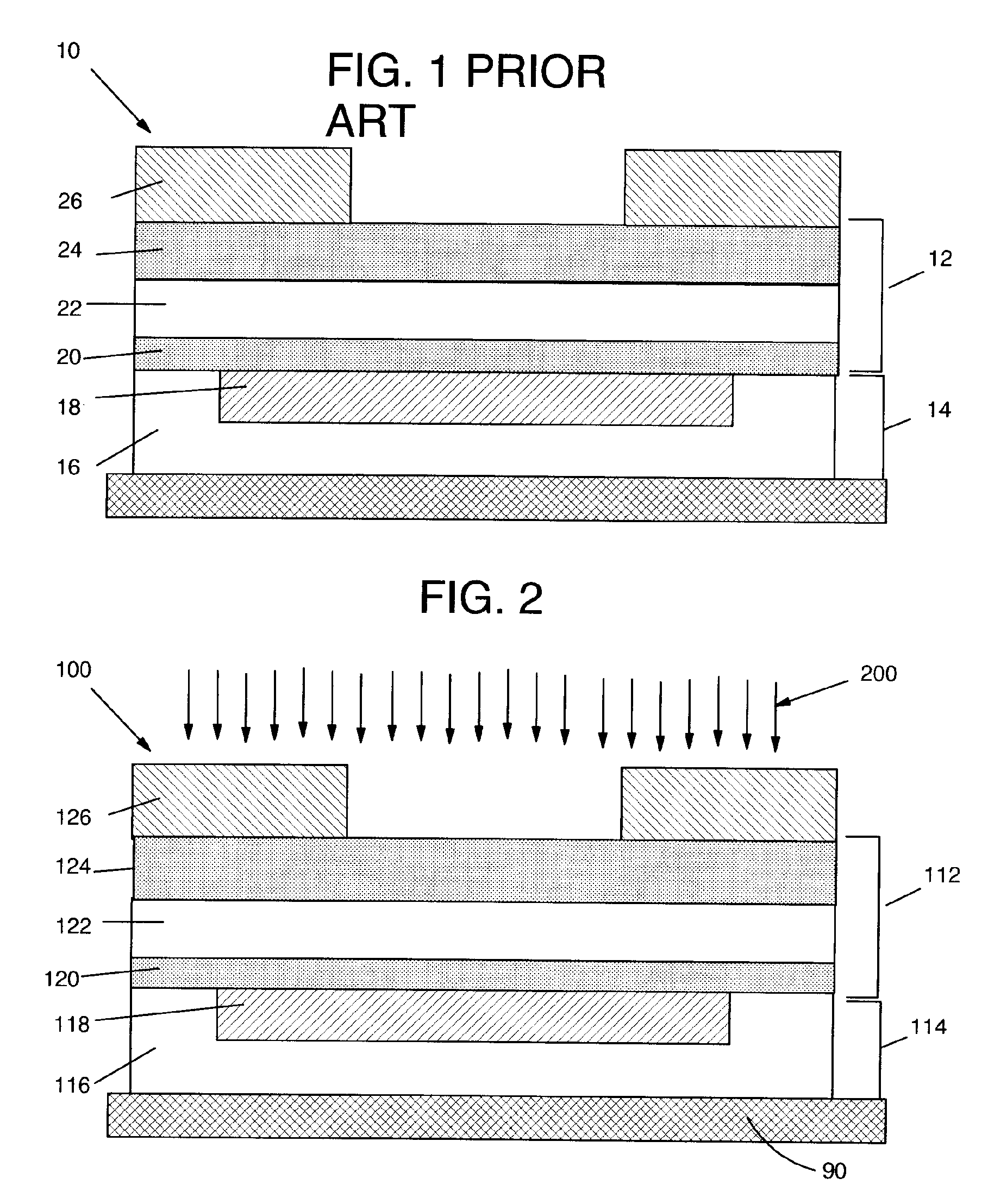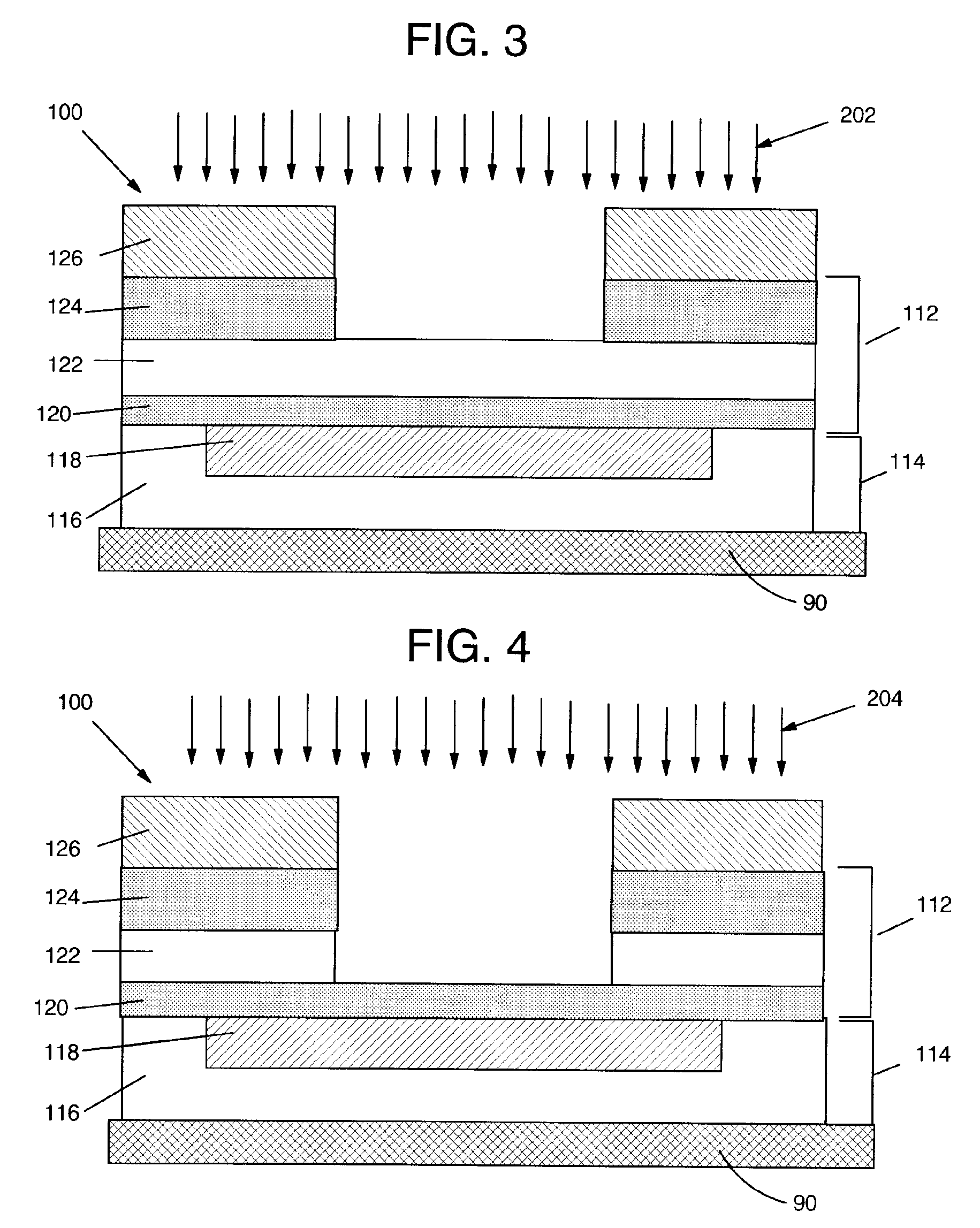Etching processes using C4F8 for silicon dioxide and CF4 for titanium nitride
a titanium nitride and etching process technology, applied in the field of semiconductor fabrication, can solve the problems of reducing the etching rate, and reducing the conventional rie process for removing tin from the dielectric etching tool, so as to reduce the esd d
- Summary
- Abstract
- Description
- Claims
- Application Information
AI Technical Summary
Benefits of technology
Problems solved by technology
Method used
Image
Examples
Embodiment Construction
[0018]With reference to the accompanying drawings, FIG. 2-6 show one embodiment of a method of etching to form an opening to expose a conductor according to the invention. A pattern for the opening is provided by a photoresist. The method modifies the conventional process such that electro-static discharge (ESD) defects are reduced and etch rates are not degraded. The process is carried out in a typical dielectric reactive ion etching (RIE) tool, i.e., not a metal RIE tool. The RIE chamber used is capable of two RF settings, e.g., approximately 2 MHz (bottom RF source electrode) and approximately 27 MHz (top bias power electrode).
[0019]The process begins with a conventional semiconductor structure 100 including a stack (sometimes referred to as a large-via pad stack) including dielectric layers 112, similar to that shown in FIG. 1. Structure 100 includes a conductor level 114 including a dielectric layer 116 (e.g., of silicon dioxide (SiO2) or any other appropriate dielectric materi...
PUM
| Property | Measurement | Unit |
|---|---|---|
| pressure | aaaaa | aaaaa |
| temperature | aaaaa | aaaaa |
| pressure | aaaaa | aaaaa |
Abstract
Description
Claims
Application Information
 Login to View More
Login to View More - R&D
- Intellectual Property
- Life Sciences
- Materials
- Tech Scout
- Unparalleled Data Quality
- Higher Quality Content
- 60% Fewer Hallucinations
Browse by: Latest US Patents, China's latest patents, Technical Efficacy Thesaurus, Application Domain, Technology Topic, Popular Technical Reports.
© 2025 PatSnap. All rights reserved.Legal|Privacy policy|Modern Slavery Act Transparency Statement|Sitemap|About US| Contact US: help@patsnap.com



